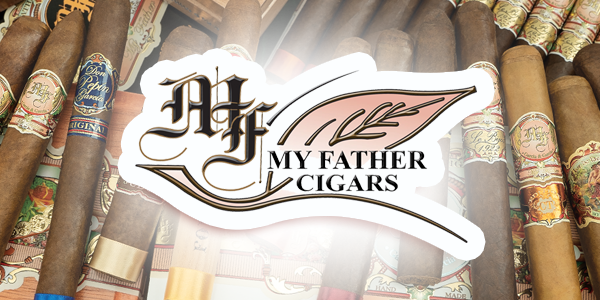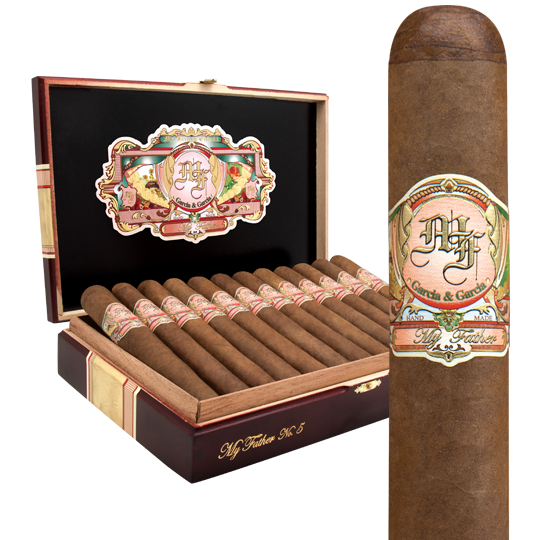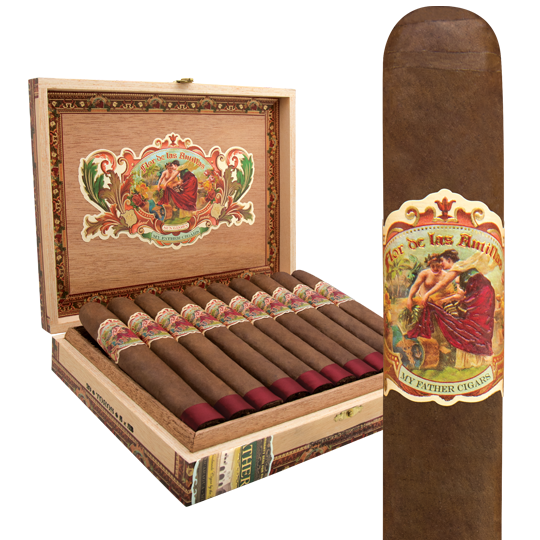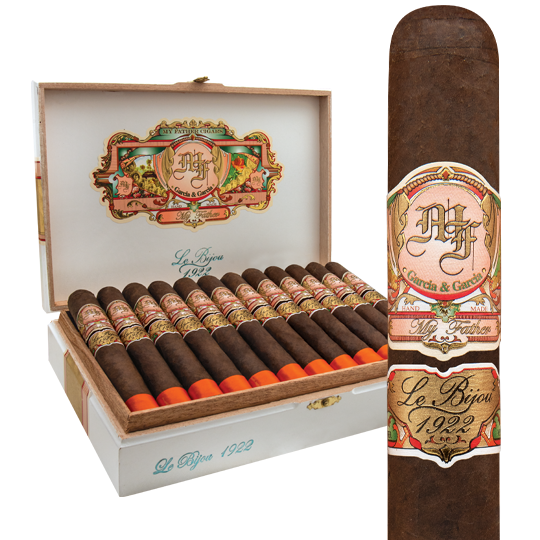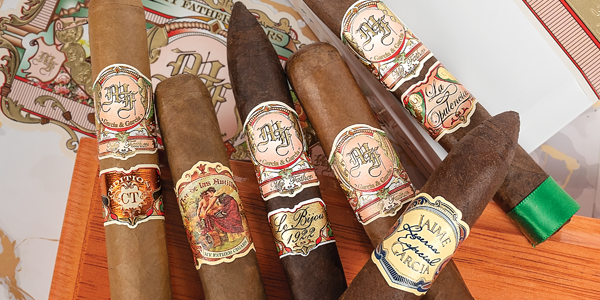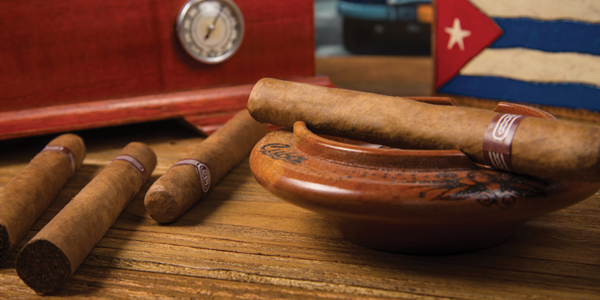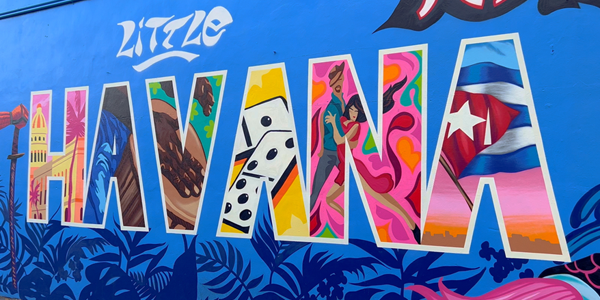History of My Father Cigars
It’s hard to imagine a premium cigar store without My Father cigars in the humidor, but twenty years ago, this iconic brand didn’t exist. The rise of My Father Cigars as one of today’s most prestigious cigar companies has been meteoric, and the brand continues to grow dramatically without sacrificing a hint of the quality or tradition its reputation is synonymous with. Here’s a look at the family behind My Father Cigars and their road to success.
José ‘Pepin’ Garcia, The King of Cuban Cigars
Lots of the best cigar-makers left Cuba when Fidel Castro came to power during the Cuban Revolution. The trend has continued for years. Because the communist Cuban government owns the cigar industry, the growth and success of its most talented cigar-makers is severely limited – unless they leave the country.
José ‘Pepin’ Garcia, who simply goes by “Pepin,” is the most famous cigar-maker to emerge from Cuba in recent decades. Pepin began making cigars at the age of eleven in the small town of Báez, Cuba, located east of Havana in the province of Villa Clara. Pepin always believed the cigars rolled in Villa Clara were of superior construction and quality to those made in Havana.
Pepin was in his fifties when he left Cuba in 2002 and was an accomplished cigar roller, working on some of Cuba’s best-known brands, including Montecristo, Cohiba, and Romeo y Julieta. He trained hundreds of rollers to craft these famous Cuban brands too. He emigrated to the States with his son, Jaime, to join his daughter, Janny, in Miami. She had been in America since 1997. Jaime and Janny are instrumental in running My Father Cigars with their father. Now in his early seventies, Pepin’s success in Nicaragua, with the cigars he produces for the U.S. market, drastically surpasses his potential in Cuba and is the embodiment of the American dream.
Pepin’s first cigar-making operation in the U.S. was modest to say the least – a tiny, nondescript chinchalle in Miami’s Little Havana neighborhood with barely a dozen cigar rollers. Contrasting its demure façade and cramped quarters, a sign outside the business read, “El Rey de los Habanos,” or “The King of Cuban Cigars.” Make no mistake, Pepin is a humble man. Like many Cuban expatriates before him, he started over from scratch when he came to the States. But his confidence as a cigar-maker has never faltered. He simply needed an opportunity to prove himself.
Tatuaje, San Cristobal, & La Aroma de Cuba
The first cigars Pepin made were under contract for others at his small Miami operation. Pepin produced the first Tatuaje cigars for brand owner Pete Johnson who launched his cigar line in 2003. Tatuaje cigars garnered praise from the critics, and the Garcias were soon challenged to keep up with demand. They also released the first Don Pepin Garcia cigars in 2003, a line named for their patriarch.
By 2007, the Levin family, owners of the Ashton brand, partnered with the Garcias to produce San Cristobal, a new cigar line made in Nicaragua with premium Nicaraguan tobaccos. The popularity of San Cristobal cigars prompted the Levins to transfer production of their historic Cuban-legacy brand, La Aroma de Cuba, from Honduras to the Garcias’ Nicaraguan factory. La Aroma de Cuba sales exploded as the Garcias opened a sprawling new complex in 2009 to increase the scale of their operation.
My Father Cigars: A Family Affair
The My Father brand was conceived by Pepin’s son, Jaime, who blended and developed the first My Father cigars covertly, intending to surprise his father by honoring him with the new line. Jaime swore the rollers to secrecy as he had them craft the first My Father prototypes, but Pepin discovered what he was up to. After demanding samples of the cigars to judge for himself, Pepin was impressed. My Father proved a great fit for the parent name of the company too.
To say the close-knit Garcia family is obsessed with tobacco would be an understatement. In a 2007 interview with Cigar Aficionado, Jaime professed, “in my home, we only speak tobacco.” “Every day, every time, every week, only cigars.” Pepin and Jaime oversee the factory and a growing network of tobacco farms, while Janny plays a critical role traveling around the country and managing the sales force for My Father Cigars.
Vertical Integration: Owning Their Farms & Their Factory
The Garcia Family Industrial Park in Estelí, Nicaragua, is a large complex spanning several acres. First a box factory was constructed, then a warehouse for preparing tobacco before it’s rolled into cigars was built, and finally, an expansive rolling gallery opened. In 2009, the Garcias began producing cigars there, greatly increasing their rolling capacity from the smaller Nicaraguan facility they worked from beforehand. Now that the entire footprint of their substantial complex is operational, the Garcias control every aspect of tobacco growing and cigar making.
Their modern facilities are immaculate and fully equipped to sort, ferment, and age tobacco before the cigars are handcrafted by hundreds of highly skilled rollers. The finished cigars are then aged for a longer period before they’re packaged in boxes made onsite and shipped to retailers around the world.
When the Garcias opened their first Nicaraguan cigar factory in 2007, they increased production from 2 million cigars per year to 5 million, and their goal at the time was to reach 7 million. In 2022, they made over 20 million cigars fueled by the surge in demand that began in 2020. The company shows no signs of slowing due to the popularity and consistency of the brands they make, and they’re equipped to produce even greater numbers of cigars in the future.
Controlling their cigars from the time the seeds are planted until the finished product leaves the factory is critical to maintaining a high level of quality control. The Garcias own farms throughout many of Nicaragua’s major tobacco-growing regions, including Estelí, Jalapa, and Namanji, where they grow their own binder, filler, and wrapper crops. And they’re contracted with the top tobacco growers outside of Nicaragua, sourcing prized wrappers from the most desirable fields in the Connecticut River Valley, Ecuador, and Mexico’s San Andrés Valley. My Father Cigars is among the largest operations in Nicaragua. The Garcias warehouse vast reserves of premium tobacco to ensure the smoothest taste and the highest level of consistency in every cigar they produce, and it shows when you smoke any one of the many brands they manufacture.
Uncompromising Cuban Tradition
Throughout the incredible growth of My Father Cigars, the Garcias have maintained a deep allegiance to Cuban cigar-making traditions. Despite the cost, time, and effort involved, their tobaccos receive a time-consuming triple-fermentation. Cigars are rolled according to the entubado method, where the filler tobaccos are rolled into individual tubes, allowing for greater airflow and for more tobacco to go into each cigar – a very labor-intensive process. And the cigars are meticulously finished with a triple cap, the way it’s done in Cuba. Pepin even sold the tobacco deveining machines he once experimented with in the interest of preserving his workforce, after realizing each machine represented sixty mouths that depended on his factory for employment.
My Father Cigars Rule the Rankings
In 2012, the Garcias won the coveted ‘Cigar of the Year’ title in Cigar Aficionado with their 96-rated Flor de las Antillas cigar. They repeated the honor a few years later in 2015 with the 97-rated My Father Le Bijou 1922. In 2024, they added a third ‘Cigar of the Year’ to their repertoire when the critics ranked My Father The Judge in the top spot with an impressive 98-point rating. The Judge stands out if you’re a fan of Nicaraguan cigars with an Ecuador Sumatra wrapper. Besides these three Nicaraguan classics, the Garcias blend and produce a several brands that routinely crack the critics’ annual ‘Top 25’ list, including the 95-rated My Father La Opulencia, the 95-rated La Aroma de Cuba Mi Amor, 95-rated San Cristobal Quintessence, 96-rated La Mission L’Atelier 1959, the original 94-rated My Father, and the 94-rated La Aroma de Cuba Edición Especial. Explore the best My Father cigars along with the dozens of other amazing smokes blended by Pepin.

